I started feeling feverish when I got home in Kuala Lumpur on September 21 after returning from Kota Kinabalu, Sabah. I had flown to KK on September 19 to attend the launch of The Vibes, a news portal.
While I was in KK, I also took the opportunity to attend an election campaign rally. A friend of mine adamantly refused to go to any campaign rallies in light of the surge of Covid-19 cases in Sabah, even though KK only officially recorded one locally transmitted case then, so another person took me to the rally. I returned to Kuala Lumpur the day after on September 21.
Because I started feeling feverish when I got home, I decided to get tested. I had taken great care to wear a face mask whenever I was in a car or out at events in KK. I did not remove my face covering at all on my return flight to KL as I didn’t eat or drink on the 2.5 hour flight; some passengers, though, did take off their face mask while they were sleeping, or eating or drinking.
I did a health assessment on the MySejahtera app that listed me as a patient-under-investigation (PUI) after I answered “yes” to questions on whether I had Covid-19 symptoms (fever) and whether I was in any area with a confirmed Covid-19 case. The latter question didn’t state the radius of an area with a confirmed case (I only knew that it came from a screening at Queen Elizabeth Hospital in KK, based on MOH’s official reports). The MySejahtera app told me to get screened, listing hospitals that did PUI screenings.
Day 3 (Sept 23)

As I was still having a fever for the third day, I went to Sungai Buloh Hospital. A person at the counter gave me directions on how to get to the screening area. As I checked in with MySejahtera, personnel pulled me aside since the app listed me as “high risk”. I was brought a few metres away and stood, one metre away, before two health workers who asked me why I wanted to get tested. They took my IC to record my details, handing a book to me with outstretched hands so I could place my MyKad on the book without them getting into close proximity with me.
I was instructed to follow a nurse to the screening area. She told me to follow her at a distance of 1 metre behind. As we walked, she yelled at people in the corridor to clear the way as a Covid patient was coming through. People immediately stood aside and we walked a clear path.
I felt like Cersei Lannister from Game of Thrones doing her walk of atonement through the streets of King’s Landing; only, I wasn’t naked and the nurse wasn’t ringing a bell and calling out “Shame! Shame! Shame!”
The nurse turned to me apologetically and said “sorry”. I waved her apology away.
At the screening area, health care workers told me that I couldn’t get tested at Sungai Buloh Hospital as Covid-19 tests there were only for people who had contact with confirmed cases. I said the MySejahtera app had classified me a PUI and that Sg Buloh Hospital was listed for PUI screenings, but the health care worker said MySejahtera’s assessment wasn’t valid. They insisted Sg Buloh Hospital could only test people who had contact with confirmed cases and told me to go to Klinik Kesihatan Sg Buloh nearby instead that did more general “lower-level” screenings.
So I went to the Klinik Kesihatan. The staff there repeated the same lines as Sungai Buloh Hospital, saying the clinic only tested people who had contact with confirmed cases. I told them that the hospital had referred me to the clinic, as I politely insisted on getting tested, since the launch event and campaign rally I visited in Kota Kinabalu were attended by lots of people. Finally, they relented and told me to come back two hours later at 2pm for an RT-PCR swab test.
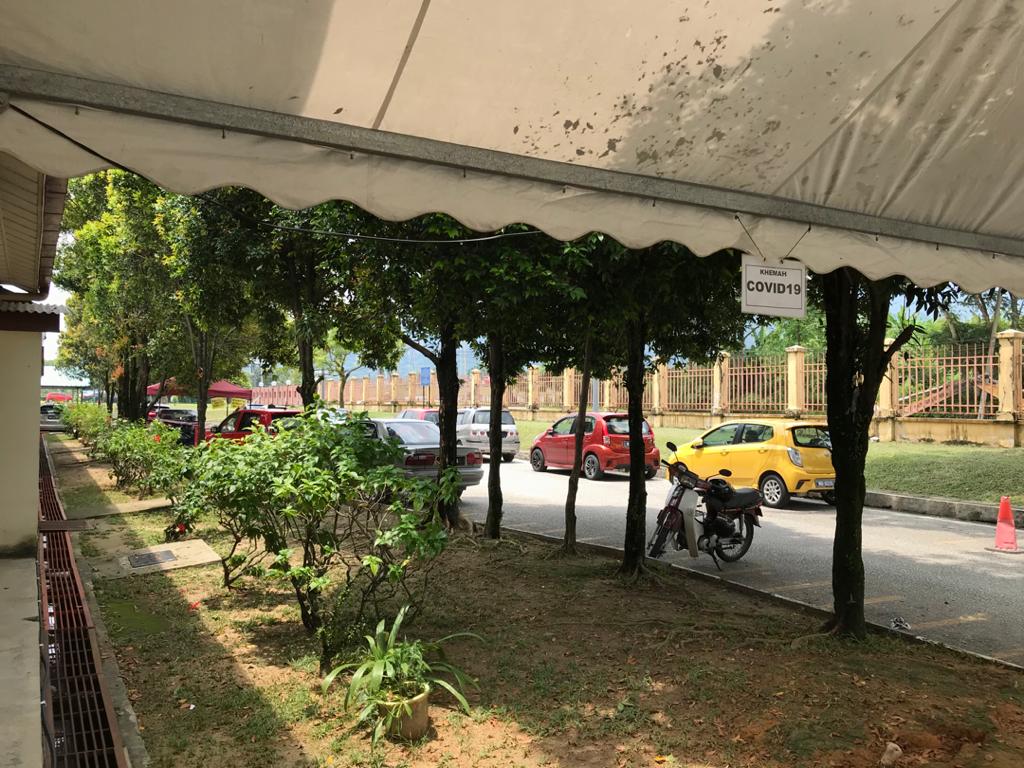
When I returned to the clinic, the staff made me wait at a Covid-19 tent, far away from other patients waiting outside under a separate tent. The swab was one of the most painful things I have ever endured, as a health care worker in full protective gear inserted a very long swab into my left nostril to collect a sample. Being the smart-aleck that I was, I asked her if she would take four samples (medical professionals have told me that four samples are far more accurate than just one). She said one sample was sufficient.
Health care workers asked for my flight details, and gave me a fresh N95 face mask and a PUI “Borang Pemantauan Harian” for me to fill in my symptoms every day for 14 days from Day One (Sept 23). They also instructed me to stay home, pending a visit from Gombak district health officers, and to self-isolate in my room if possible, since I live with my family. When I asked if I would be released from home quarantine with clear test results, they said it depended on the situation, as health officers may want to repeat testing on Day 13 of quarantine.
The test at the Ministry of Health (MOH) clinic was free. An RT-PCR test in a private facility would cost about RM300. I went straight home from the clinic. My own family members told me to stay in my tiny room downstairs and not to come upstairs at all.
Day 4 (Sept 24)

My chills disappeared on the fourth day after I started having a fever on September 21. I forced myself to take off work; my fever was probably due to overwork during my KK trip. I tire easily after being out for long hours; I don’t know how politicians do it, campaigning all day.
Day 5 (Sept 25)
My fever has disappeared, I think. I don’t have a body thermometer at home. Dr Farhan from Titiwangsa Klinik Kesihatan called to inform me that I’m an officially a close contact because there was a positive Covid-19 case on my September 21 return flight from Kota Kinabalu to Sabah (Flight OD1007)! Thank goodness I wore a face covering throughout my entire flight. A man two seats away from me was coughing without a face mask on (there was another man in between us).
Dr Farhan also told me that my test results were negative. But I would still have to be quarantined for 14 days from September 21 because I’m a close contact. MOH officers will come by my house to give me a wrist band for the home surveillance order.
Day 6 (Sept 26)
Still no fever. I think if my point of exposure was on my September 21 flight, any symptoms due to Covid should have showed up by now, even if my initial fever was due to fatigue and not coronavirus. So I reckon I should be safe. MOH officers still haven’t shown up on my doorstep to give me a pink tag yet.
Day 7 (Sept 27)
An officer from the Kepong district health office called me and gave me an electronic form of my Home Surveillance Order, via WhatsApp, backdated to September 21, the date of my return flight. The form actually requires my signature, but perhaps they don’t really need it.
When I asked if I would be given a pink quarantine wristband, the officer replied: “You want meh?”
Well, it would be nice to take a picture of it. When I assured him that my family was keeping me confined in my room and that they threatened to report me if I ever left the house, he laughed.
He also gave me the appointment date of my repeat test on October 1. It’s great that MOH staff are working even on Sundays. So I have officially gone through seven days of quarantine that ends on October 4. Half way there!
(My quarantine diary starts on Day 3, September 23, since I only started keeping track when I got tested at Klinik Kesihatan Sg Buloh and they gave me a verbal home quarantine order. I didn’t venture out anywhere after I got home from my KK trip though, since I had a fever).
Day 8 (Sept 28)
I was rather busy as both my staff took alternate times off today, leaving me with just one writer throughout the day. So I was a little slow, juggling between writing up news reports myself and editing my colleagues’ work.
I think I’m going a little crazy, staying confined in my room for over a week. My tiny bedroom downstairs used to be the maid’s room a long time ago when I was child. I’m still living in my childhood home in Taman Tun with my family. The ceiling is high, but it feels like the walls are increasingly closing in on me. I have previously joked with my partner about getting a large house with a basement, attic, garage, and a greenhouse if we ever become wealthy; he prefers a small European-style apartment.
Day 9 (Sept 29)
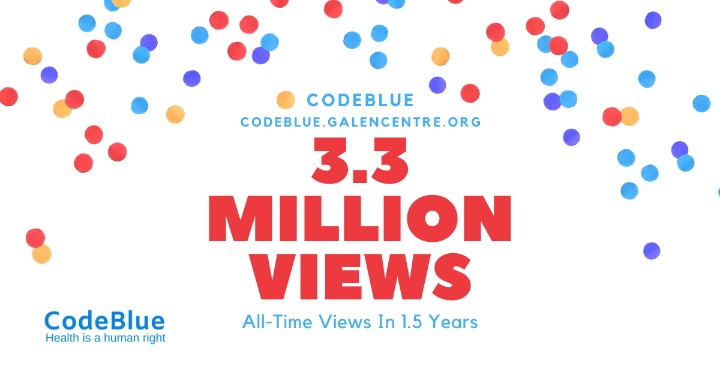
While figuring out what to list as my achievements in my application for a young leaders’ scholarship programme to study public policy at the Lee Kuan Yew School of Public Policy, I thought of looking at all-time views for CodeBlue. I posted sometime back when we hit 1.7 million views (the 1-million mark passed us unnoticed, probably sometime during the pandemic). To my absolute surprise, we actually hit 3.3 million views as of today, in just one-and-a-half-years since CodeBlue was founded in March 2019!
I can’t believe I achieved this when for the longest time, I only ever had one writer helping me. I only managed to get two health writers just a couple of months ago. When I first started CodeBlue, it was me alone. Credit goes to Azrul Mohd Khalib, of course, who leads the Galen Centre for Health and Social Policy, CodeBlue’s publisher. He designed the CodeBlue website and does maintenance work on the site. I was full of doubts before co-founding CodeBlue with Azrul. Leaving a stable job wasn’t easy; I never imagined becoming an entrepreneur and a start-up owner.
Business, I thought, was too unpredictable; despite my proclivity for impulsiveness and a certain recklessness, I’m actually not very fond of change. Although, on hindsight, starting CodeBlue was probably one of the best major life decisions I ever made. A salaried job only gives the illusion of stability; that illusion was shattered when major news organizations, already bleeding even before the pandemic, instituted pay cuts and retrenchments.
Starting CodeBlue pushed me to do far more than what I previously thought I was capable of. Although I’m proud of my previous work as an assistant news editor and political reporter at The Malay Mail and The Malaysian Insider, running CodeBlue enabled me to reach heights that I never dreamed of. It’s not easy to gain trust in the field of medicine, especially when I’m not a doctor (I have a degree in psychology), and I have to deal with various medical professionals, including lawmakers who are often doctors themselves.
But I suppose my decade-long experience in journalism, even though it was in politics, has enabled me to produce stories on health care that can be easily understood by the general public.
I think that’s one of the strengths of CodeBlue – cutting medical jargon so that health care issues and policies are accessible to laypeople, who will then know how to fight for their right to quality health care because they understand how problems at the macro level personally affect them.
I’m fortunate, of course, to have many supporters, especially medical professionals who lent their support in the early days of CodeBlue when I used to jump with joy at getting even 50 views a day.
We used to get asked who was “behind” CodeBlue. I suppose that’s a reasonable question, seeing that most news organizations are either funded by political parties or politically-linked businessmen. CodeBlue doesn’t get a bag of cash every month from men with deep pockets. I keep operations tight and overheads low, supported by enough revenue from paid work with clients (more revenue would be nice, of course). Although I may have my own personal political inclinations, CodeBlue is apolitical – we have been highlighting public policy issues in health care across two different administrations now.
Day 10 (Sept 30)

I’m dreading my second Covid-19 test tomorrow – not because I’m afraid of the result (I’m pretty sure it’s negative), but because of the painful nasal swab. It’s the most painful things I’ve ever endured, save from the time I dislocated my kneecap years ago. I had to be given opioids in hospital that time, as I waited hours in a busy public hospital to see a doctor.
Also, quarantine is killing me. I think I’m working far harder during quarantine – about 10 hours a day.
Day 11 (Oct 1)
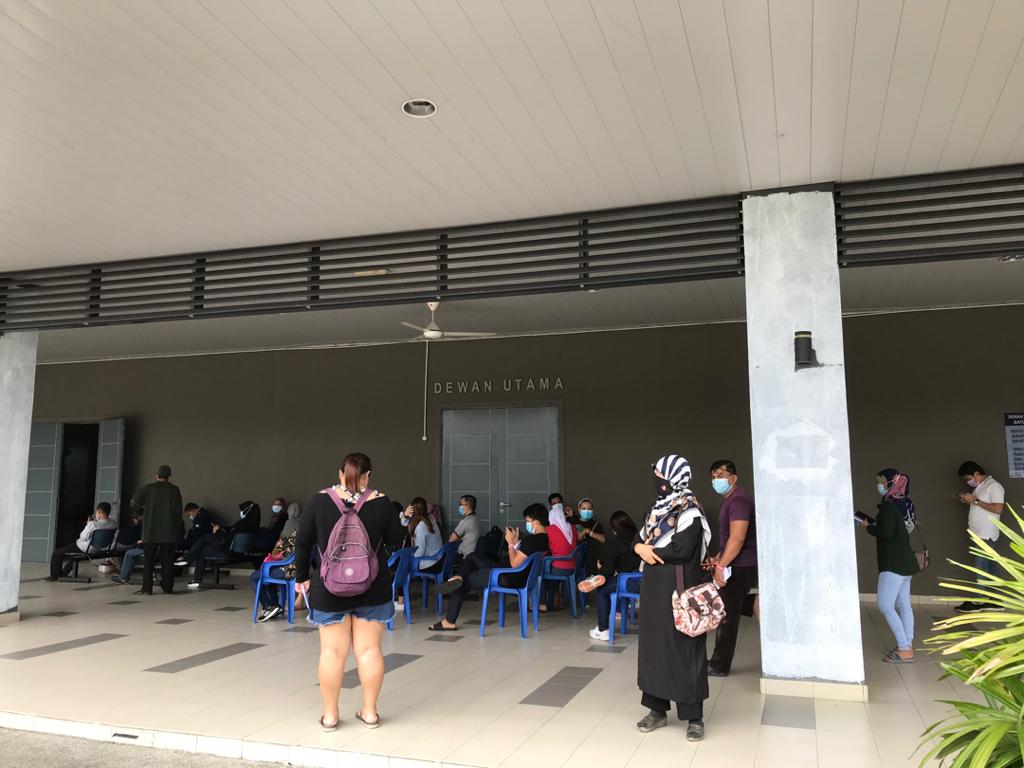
I went to a community centre in Kepong at 10.30am to do my second test, as per my MOH appointment. There were some 50 people waiting already, and not enough chairs. MOH officers were not in the community centre yet. An immigration truck rolled up soon, with audible “PATI” whispers from the crowd. Five immigration officers alighted and chatted among themselves – two of them were not wearing face masks.
While the Defence Ministry publishes daily statistics of arrests against ordinary citizens for patronizing nightclubs, or for not wearing face masks or socially distancing, the authorities themselves fail to comply with the very same rules they impose on other people.
I was quite anxious as there didn’t appear to be a queueing system. Finally, at about 11am, an MOH van rolled up. Immigration officers marched the presumably undocumented immigrants, all in chains, into the hall to get tested. After their tests, MOH officers started calling out names. To my delight, my name was the second one called.
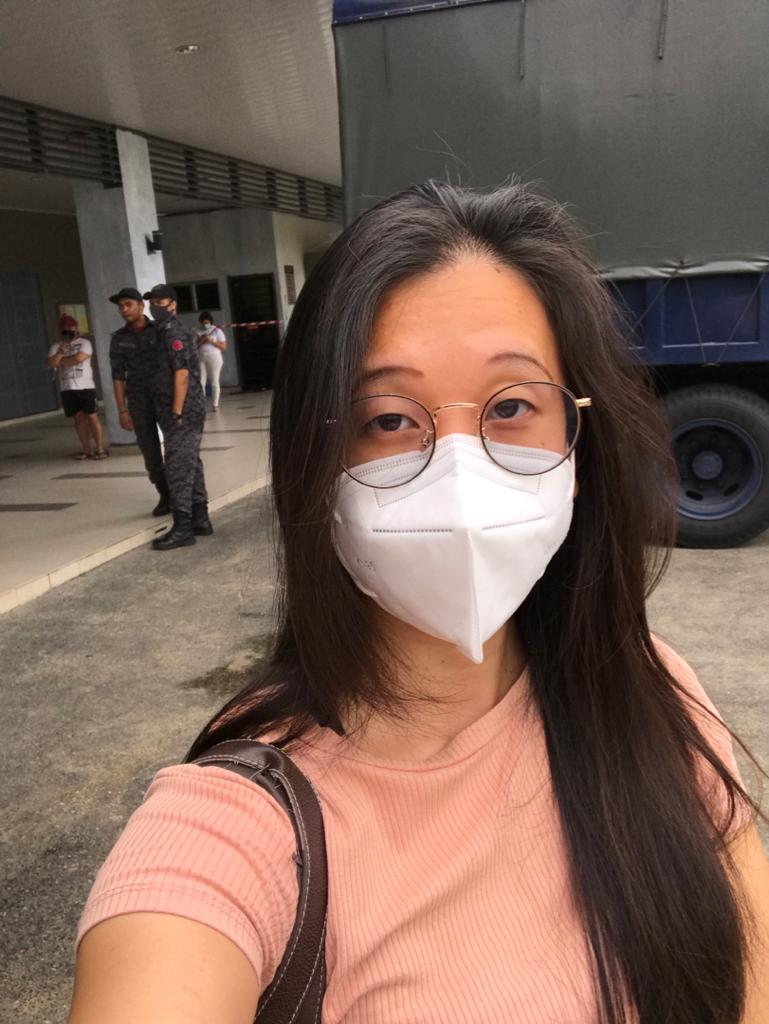
MOH officers gave me a home surveillance form backdated to September 21 and a red wristband for the remaining three days of quarantine until October 4. When I asked why it wasn’t pink, they said the quarantine bands came in three colors – pink, red, and white. They only had red bands with them at the moment. It turns out that my name was called early because they were screening people due for their second test first.
When I sat down for a nasal swab, the doctor told me to look forward and ignore the long swab coming at me. Because I already knew how painful it was going to be, she failed on her first attempt to swab me, as I kept trying to lean back against the chair to avoid the swab. And she berated me, saying: “Just look forward, if not it’s going to hurt even more”. So I held tight as she twisted the swab and counted – “one, two, three, four, five”. Done! Well, it was just as painful as the first one. Three days left of quarantine!
Day 12 (Oct 2)

Today, Malaysia hit a record high 287 new Covid-19 cases, all local transmissions, after 260 cases reported yesterday. The Sabah surge, which led to the infection spreading nationwide in just 10 days, appears to have hit the country hard, although I believe that the virus has always been around in KL and Selangor, at least, even before the Sabah election. Sporadic community cases have previously been reported before the campaign, but MOH had still maintained exclusive testing, generally only testing people who had contact with confirmed cases, as illustrated in my experience trying to get tested upon returning from Kota Kinabalu on September 21.
Day 13 (Oct 3)
Another record high of 317 new Covid-19 cases, the same day when Singapore reported just six fresh infections (only one in the community). Bear in mind that Singapore does extensive testing, compared to Malaysia. Singapore’s MOH also publishes on its website the average daily number of swabs tested over the past week. Malaysia has certainly increased testing, at least in Sabah and Kedah, ever since more and more districts in Sabah turned red. Deputy Health Minister Aaron Ago Dagang said last August 14 that MOH only does 5,000 to 6,000 tests daily, despite a maximum capacity of 38,600 tests. It’s uncertain how many Covid-19 tests MOH ran over the past week.
Day 14 (Oct 4)
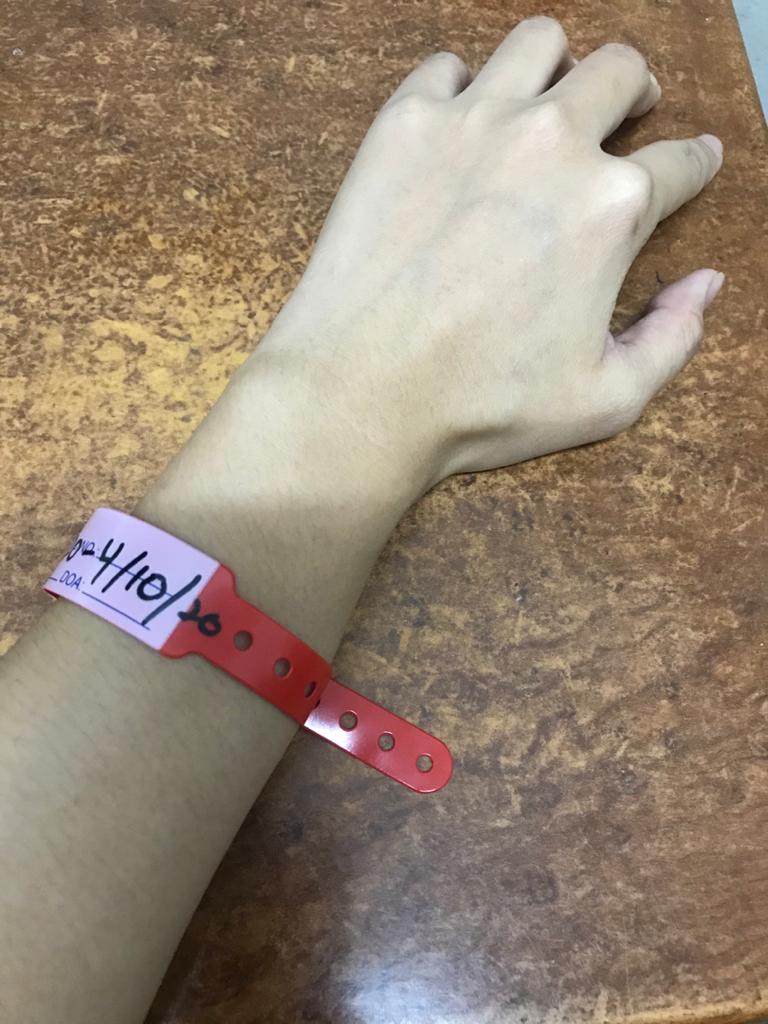
Today is supposed to be the last day of quarantine. I called up the Kepong district health office (PKD), but they told me that my test still hasn’t been processed yet because of the bulk of tests in the lab. RT-PCR tests usually take 24 to 48 hours to produce results. It has been three days since my test on October 1. The MOH officer told me the last tests processed were from September 30. So I guess I have to wait till tomorrow for my test results. He also said I’d be required to go to the district health office to get my home release order and to cut off my red quarantine band.
Day 15 (Oct 5)
The Kepong PKD still hasn’t called me. And I didn’t have time to call them because of the huge amount of work amid the Covid crisis. Another record high of 432 cases and what’s worse, Religious Affairs Minister Zulkifli Mohamad, who attended the special National Security Council (NSC) Covid-19 meeting on October 3 with almost the entire top leadership of government, contracted Covid-19. MOH simply said that his test results today were positive; they didn’t say when or why he got tested. He was described as asymptomatic and that the rest of the participants of the October 3 meeting got tested after Zulkifli’s results were positive. Presumably, if he took an RT-PCR test, he got tested on October 2 or 3.
Day 16 (Oct 6)
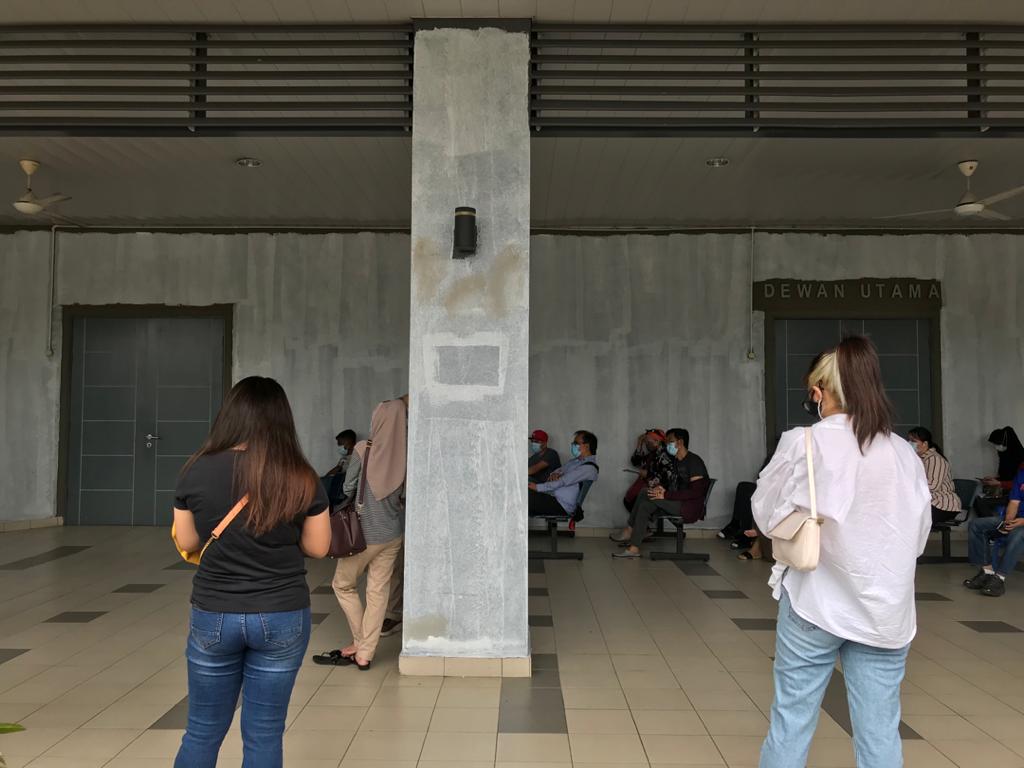
I called the Kepong PKD for my test result and they told me I tested negative! So I have to go to the same community centre that I visited earlier to get my second test done. Funny enough, Sungai Buloh Hospital called me, wanting updates on my case, since I had earlier visited them on September 23 but they refused to test me, referring me instead to Sungai Buloh Klinik Kesihatan. So I just told them what I did subsequent to my testing at the public health clinic.
When health officers cut off my red tag, I asked if I could get a physical copy of my test results. They just told me brusquely – “You’re negative. It’s in the system”. I didn’t want to push the harassed frontliners further, so I just took their word for it, although it is quite unfair that so many politicians post their negative test results on social media.
Anyway, I’m negative! Thus ends my Covid-19 quarantine journey through the public health care system.

Boo Su-Lyn is CodeBlue editor-in-chief. She is a libertarian, or classical liberal, who believes in minimal state intervention in the economy and socio-political issues.







